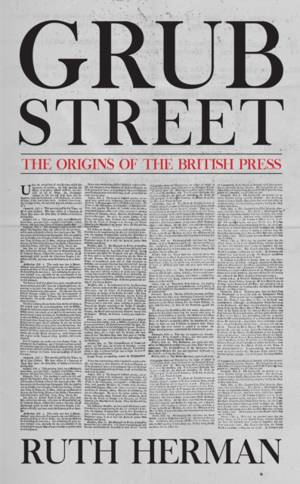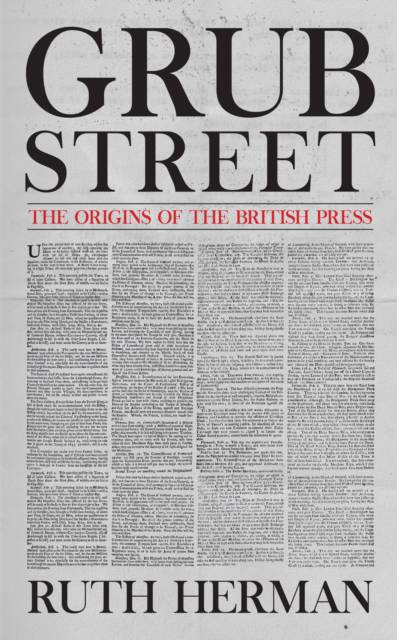
Je cadeautjes zeker op tijd in huis hebben voor de feestdagen? Kom langs in onze winkels en vind het perfecte geschenk!
- Afhalen na 1 uur in een winkel met voorraad
- Gratis thuislevering in België vanaf € 30
- Ruim aanbod met 7 miljoen producten
Je cadeautjes zeker op tijd in huis hebben voor de feestdagen? Kom langs in onze winkels en vind het perfecte geschenk!
- Afhalen na 1 uur in een winkel met voorraad
- Gratis thuislevering in België vanaf € 30
- Ruim aanbod met 7 miljoen producten
Zoeken
Grub Street: The Origins of the British Press
The Origins of the British Press
Ruth Herman
Hardcover | Engels
€ 27,95
+ 55 punten
Omschrijving
Love it or loathe it, the British press stands out as a remarkable institution. Sometimes referred to as the fourth estate and accused of wielding power without responsibility, it has been a channel for the dissemination of information those at the top of the pyramid of power would rather stayed hidden. Often, though, it has also delighted in scraping the bottom of the public interest barrel, deliberately manipulating certain truths and revelling in gossip and scandal.But where did this naughty child start? Here, Ruth Herman takes the reader back to the early days of the British press. The book journeys through the unsuccessful attempts of the government to silence the writers and how the army of journalists found their feet and honed their craft. The book also looks at the personalities who wrote fearlessly and the role played by some of English literature's most famous names. Printers and booksellers played a big part in the development of the press, and they are given their share of the limelight.There are stories of sedition and financial insider trading, and a look at the astonishing variety of content that appeared in these early periodicals. This included early examples of writing targeted at women, as well as the often bizarre early advertising that shared these same pages.
Specificaties
Betrokkenen
- Auteur(s):
- Uitgeverij:
Inhoud
- Aantal bladzijden:
- 304
- Taal:
- Engels
Eigenschappen
- Productcode (EAN):
- 9781445688848
- Verschijningsdatum:
- 15/01/2020
- Uitvoering:
- Hardcover
- Formaat:
- Genaaid
- Afmetingen:
- 155 mm x 236 mm
- Gewicht:
- 566 g

Alleen bij Standaard Boekhandel
+ 55 punten op je klantenkaart van Standaard Boekhandel
Beoordelingen
We publiceren alleen reviews die voldoen aan de voorwaarden voor reviews. Bekijk onze voorwaarden voor reviews.









